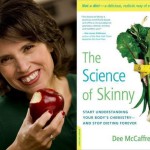Soaking Nuts for Good Health
 Nuts and seeds are two power foods that can bestow some serious health benefits—including weight loss, reduced levels of inflammation, reduced risk of heart disease and reduces risk of type 2 diabetes. However, as a way of preserving and protecting them in the wild, Mother Nature designed them to be quite difficult to digest, and even toxic.
Nuts and seeds are two power foods that can bestow some serious health benefits—including weight loss, reduced levels of inflammation, reduced risk of heart disease and reduces risk of type 2 diabetes. However, as a way of preserving and protecting them in the wild, Mother Nature designed them to be quite difficult to digest, and even toxic.
You see, locked inside all seeds (nuts, grains, and legumes are seeds of plants too) is the genetic material to grow an entire new plant. As you might imagine, Mother Nature would want to protect a seed from anything that might want to consume it before being able to reproduce itself. Therefore, seeds were equipped with an arsenal of self defense mechanisms known as anti-nutrients, which are contained in the outer seed coat (or bran, in the case of grains). These toxic anti-nutrients keep insects, predators, bacteria, viruses or fungi, from destroying seeds prematurely.
These anti-nutrients also act as built-in growth inhibitors—a preservation system that allows the seeds to remain dormant for long periods of time. This is why they can be kept in a dormant state in seed banks for decades without any damage to their DNA. The anti-nutrients protect the seed until conditions are right to start the growth cycle. In order to sprout, plants need moisture, warmth, time and slight acidity in the soil or water.
When placed in water or planted in the ground, a seed will begin to germinate. Once the germination process starts, natural enzyme activity eliminates the anti-nutrients from the outer seed coating and transforms the long-term-storage properties of the seed into simpler molecules that are easily digested. This is why soaking nuts, seeds, grains, and legumes has been an important part of traditional food preparation for thousands of years. Soaking mimics the natural germination process that occurs in nature. What’s more, this process unlocks important enzymes and nutrients that are unavailable to us when the seeds or nuts are not soaked.
To read the rest of this article (Click Here)
How to Soak Nuts and Seeds
Place the raw nuts or seeds in a glass jar or bowl and cover them with water of the correct temperature (see the chart below). Note: If the chart indicates warm water, it only needs to be warm initially. You don’t have to keep the water warm for the entire soak time.
Add a pinch of salt or apple cider vinegar, and allow them to soak according to the chart below.
Drain off the water and DRY the soaked nuts or seeds by blotting them dry with a towel and then spreading them on a baking sheet and put them in the oven with the oven light on. DO NOT TURN ON THE OVEN. You can leave them in the oven all day to dry while you are away. The light will create a very low heat (no higher than 120 degrees) and will allow them to dry, but won’t harm the delicate oils contained within them.
You may also dry them in a dehydrator.
When you store soaked nuts or seeds, make sure they are completely dry, otherwise they will go moldy very quickly. Soaked nuts and seeds should also be stored in the refrigerator.
(soaking times are in hours)
 If you are looking for sustained weight loss, a way to help your kids eat healthier, or a remedy for a certain health problem, you won’t want to miss the May meeting with special speaker Dee McCaffrey. I’ve been following her for years and have learned so much from her books, teachings and podcasts. Most of you look to me for healthy info and tips, and now I’m going to introduce to you where I’ve learned most of my information.
If you are looking for sustained weight loss, a way to help your kids eat healthier, or a remedy for a certain health problem, you won’t want to miss the May meeting with special speaker Dee McCaffrey. I’ve been following her for years and have learned so much from her books, teachings and podcasts. Most of you look to me for healthy info and tips, and now I’m going to introduce to you where I’ve learned most of my information.
May 11 – Special Speaker: Dee McCaffrey, Author of The Science of Skinny: Start Understanding Your Body’s Chemistry and Stop Dieting Forever
6:30-7:30PM, Cornerstone, Chandler Campus A104
Dee McCaffrey is an organic chemist and nutritionist who lost 100 pounds and has kept the weight off for over two decades. She is the founder and nutrition director of Processed-Free America, and teaches nutrition at The Southwest Institute of Healing Arts in Tempe.



